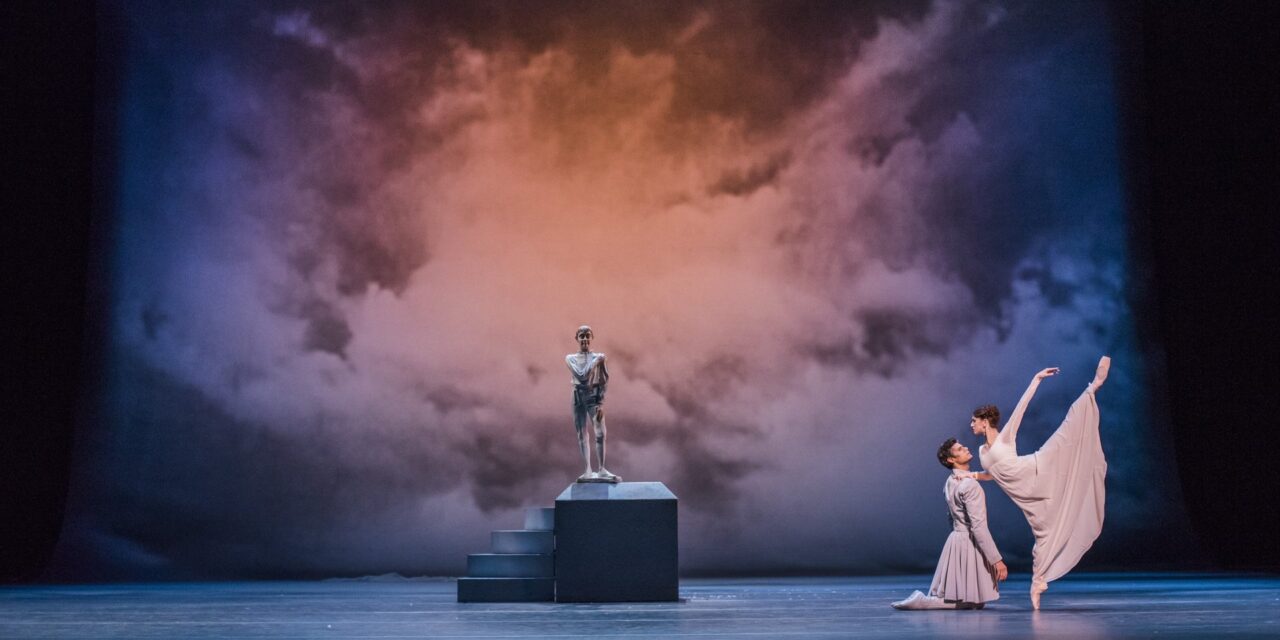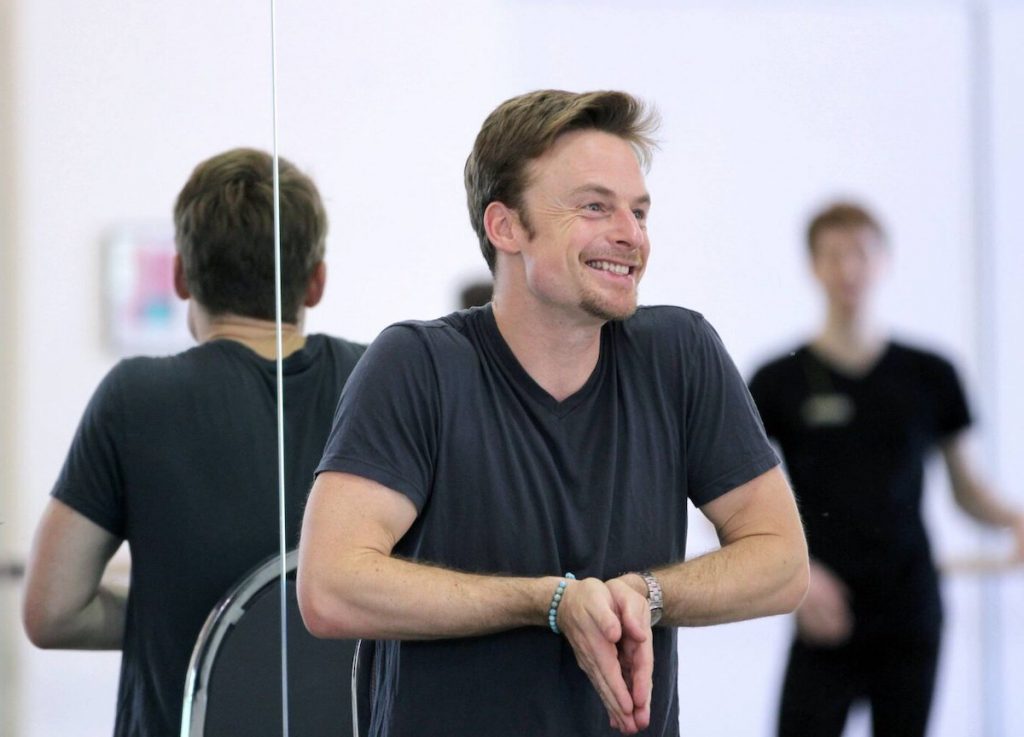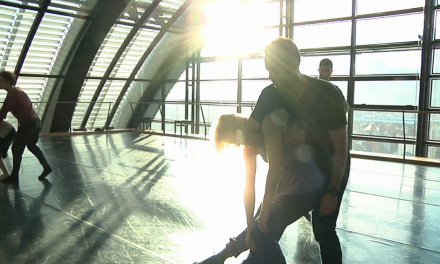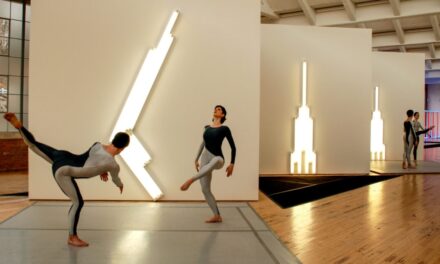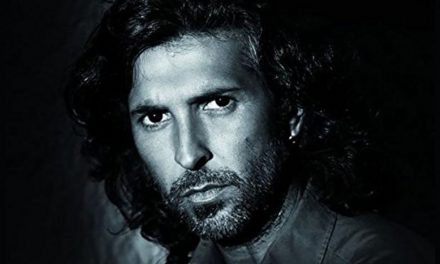After a full day of rehearsal, Christopher Wheeldon, Director & Choreographer of such lauded works as the cheeky, Alice’s Adventures in Wonderland, the romantic American in Paris and Like Water for Chocolate , and the electrifying “MJ” graciously took time out of rehearsal to chat about the upcoming American Ballet Theatre’s production of Shakespeare’s, The Winter’s Tale at the Segerstrom Center for the Arts, April 3-6, 2025. He shed light on his process as creator of dance theatre, his career, and thoughts about his work. As a fan, I had questions that were just waiting for some insight from him directly. And with that, we took off …
JD: Hi Chris, thank you for taking time out of your hectic rehearsal schedule to give me some insights on your work and process. Just to let you know, having seen much of your work over the years, it never ceases to fascinate, entertain and provoke burning questions about your process for me.
CW: Hello Joanne. Great! I love burning questions.
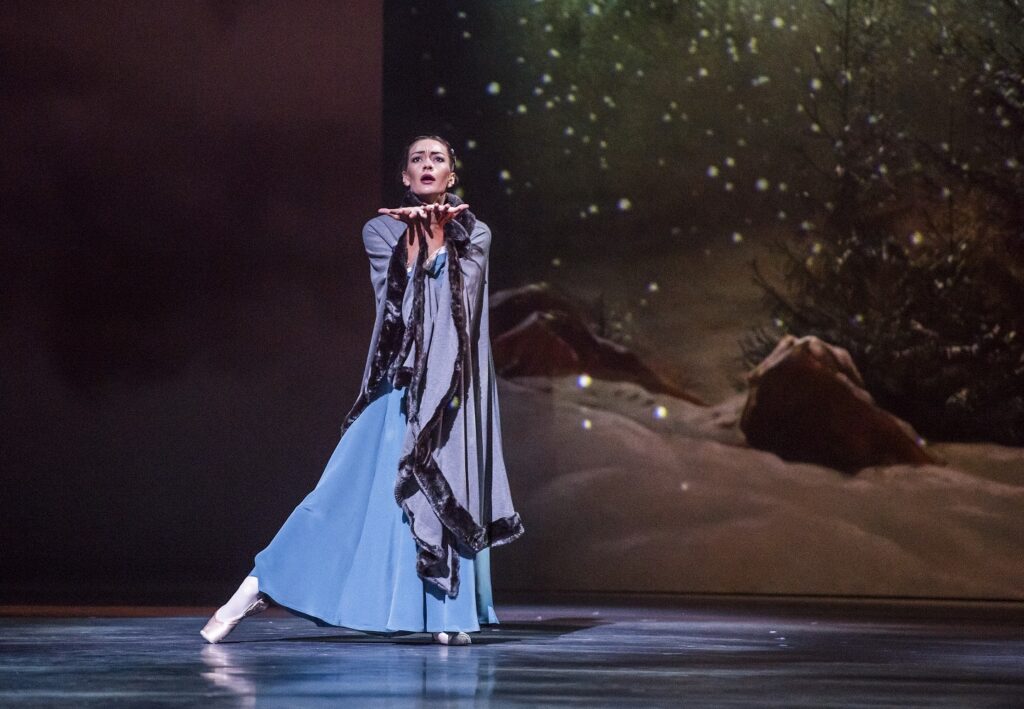
Tierney Heap in Royal Ballet’s “The Winter’s Tale” choreography by Christopher Wheeldon – Photo ©Tristram Kenton.
JD: Because A Winter’s Tale is such a challenging work, I was wondering how you developed your approach? On seeing the piece, it’s so beautifully character driven and the plot, with all its complexities, clearly unfolds throughout the ballet. So my question is, did you work with a dramaturg to help design the relationships and story in the ballet?
CW: it’s a great question and you know, sometimes we, Joby Talbot (composer) and I choose to work with a dramaturg or a playwright, and sometimes we don’t. Sometimes we actually quite like to take things on ourselves. The original idea for Winter’s Tale actually came from Sir Nicholas Hytner who was then the Director of the National Theater of London. And for me, is the number one director of Shakespeare anywhere in the world now. He is our great Shakespearean director, and, he said,” You know, Winter’s Tale has always been a problem play for directors because of the duality of the story, because of the, you know, the intense extreme drama of the court of King Leontes, and then … directors often struggle with balancing that with this sort of bucolic, springtime, Bohemian environment.
Quite often the director stumbles because both are so extreme that they don’t actually come together and don’t make for a holistic production. And he said, I think actually the problem often lies in Bohemia…because so many directors don’t really know how to, you know… Bohemia is a fictional place. It’s a sort of place of fantasy in a sense. And, you know, they sailed to the shores of Bohemia. Of course, we know that Bohemia is actually in central Europe and you can’t get to it by boat. So, Shakespeare obviously wasn’t being literal.
I think Nick felt that the problems could in fact be to the benefit of the balletic version of the story. And I think he was right in a way. You know, we know how to do pastoral peasant-like scenes in ballet. They’ve existed in the same way that spectral visions and fairytales have existed in ballet for centuries.
So, it sort of made sense in a way to me. And he was the one who suggested it. He made an outline for us, some of which we kept, and then some of which we adapted, uh, just to sort of fit within the mold of a ballet. Yeah, that was sort of how that came about and, we took some artistic license and added a few things to help the plot along. Like the emerald necklace that Leontes gives to Hermione, his wife, at the very beginning of the ballet, that then gets passed to Perdita their daughter. So we understand the connection and there’s something visual to connect the two of them when they come back together. Little things that we hope Mr. Shakespeare wouldn’t be too annoyed by the few liberties we’re taking.
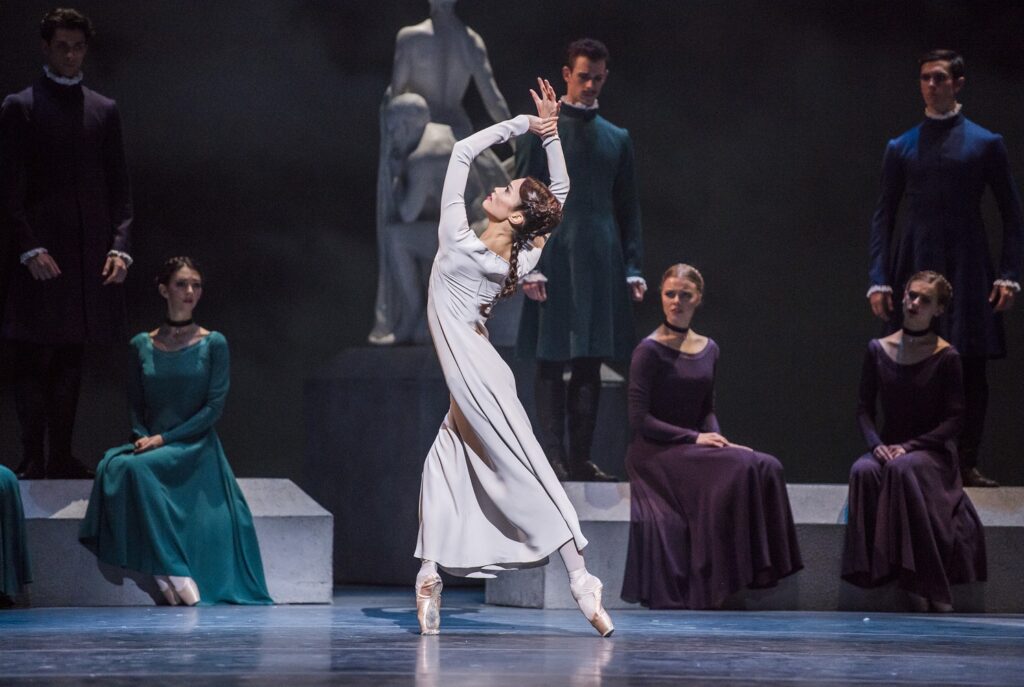
Fumi Kaneko in Royal Ballet’s “The Winter’s Tale” choreography by Christopher Wheeldon – Photo ©Tristram Kenton, courtesy of SCFTA.
JD: (smile) Yes…hopefully. Now, you of course, were the creator of the original ballet version of “A Winter’s Tale” in 2014 with the Royal Ballet. When you’re restaging it for ABT are there new aspects you discover as you go through the process of resetting and clarifying the relationships of the characters to the story?
CW: Yes, there are, and it’s always interesting to have to re-communicate original ideas and, of course, then new ideas start to spring up. I often find myself clicking into a state of clearer understanding of what it was that I was trying to achieve simply because I’m having to re-communicate it. The steps don’t change, but how this character might be thinking as they approach that character. How a character reaches out, or the angle of their head, or sometimes the more specific physical aspects of the characterizations reveal how they connect.
So, yes, and you know, I’m always looking for images for the dancers. Rather than just saying, Here! You’re here, You should be feeling jealous. Or, Here, you should be feeling this or that…maybe we think of this almost as a specific movement. There are some specific moments in the choreography that are recognizable that I can point out, just in case someone sees the ballet.
There are, of course, quite a lot of clues in Shakespeare as well. There’s a famous line that Leontes says in his early speech when he’s talking about the jealousy, “I have drunk, and seen the spider,” and it’s this great, very physical image of jealousy, like a spider that’s kind of crawling around inside, inside his stomach…. and, and that sort of gave me the idea to begin the first seed of jealousy in the character’s hand, like a spider, kind of a crawling movement towards his body and then piercing the sternum and then it passes through. And so… then you start to build kind of physical architecture around an idea.
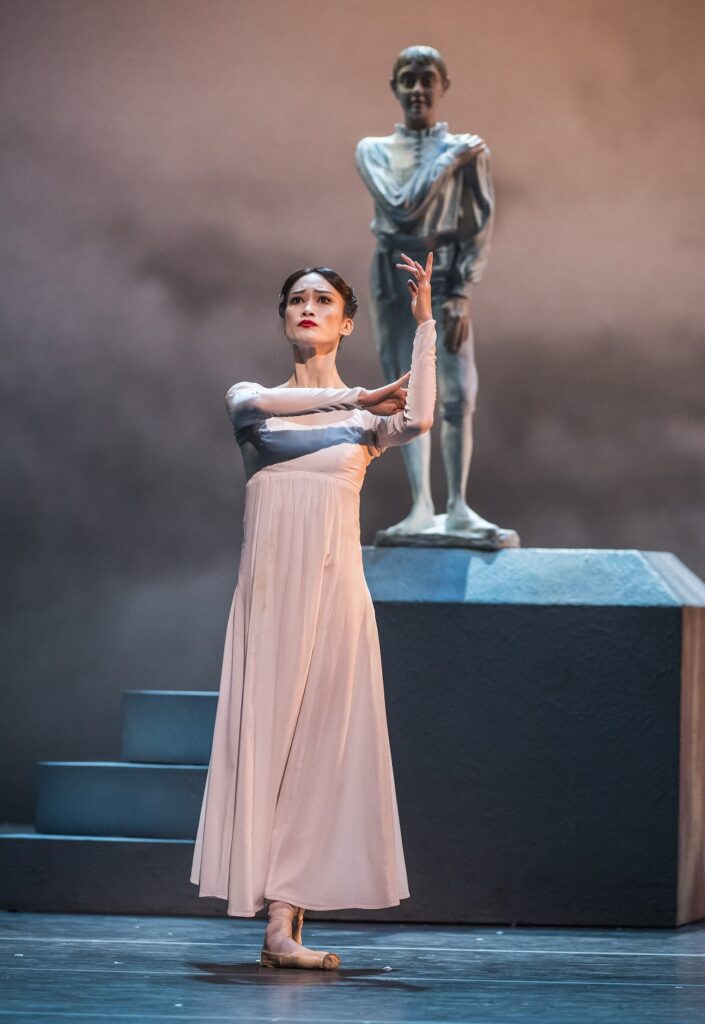
Fumi Kaneko in Royal Ballet’s “The Winter’s Tale” choreography by Christopher Wheeldon – Photo ©Tristram Kenton, courtesy of SCFTA.
JD: Yes, stunning…and so interesting to actually see it when the movement takes over the character. Such a powerful visual aspect.
CW: Yes. And it becomes about explaining the source of the inspiration to the dancer. And then helping them flesh it out and sort of pull that through a sequence of movements.
JD: So vital. How do you mine that specifically for each dancer since each are very different?
CW: I think it’s just really about trial and error and, you know, some of the dancers I work with, I’ve worked with repeatedly, so I know how they move. There’s already a built-in understanding. And sometimes it’s even fun to go against that. If someone moves in a very fluid way, asking them to move in opposition to their natural style can also be really super interesting. So, it’s just… there isn’t really a method. It’s much more about, okay, who are you as a character? You know, what movement best describes your emotional state in this moment; or what movement best describes the connection that you need to make with another character. It’s pretty straight-forward. What is most clearly going to communicate to the audience what it is that we need communicated in this moment. And sometimes that’s a really interesting movement, like something really unusual and sort of feels like you’ve never seen it before…or you hope, as a choreographer, that people have never seen before.
Sometimes it’s actually a very straightforward movement. I have sort of a rule with myself that not every step in a story ballet has to be about the innovation of movement. It’s actually more about the clear communication of character and emotion. So, of course, you’re always trying to invent and you want surprising, unique, interesting work. But… you know, you can be interesting and unique until the cows come home, and then you have the audience just sitting there mystified. So it’s a little bit of a balance.
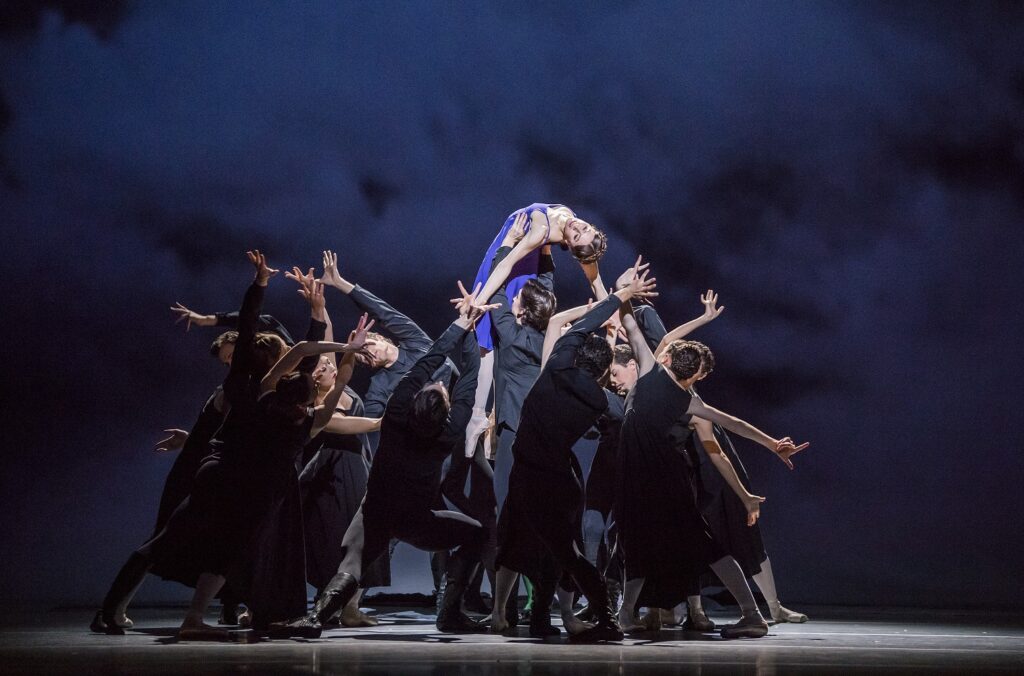
Marianela Nuñez and company in Royal Ballet’s “The Winter’s Tale” choreography by Christopher Wheeldon – Photo ©Tristram Kenton, courtesy of SCFTA.
JD: A duality.
CW: Yes, such a duality.
JD: Like life, isn’t it?
CW: Yeah.
JD: And, that discovery extends to those amazing lifts …so unique, and… in some cases, I’ve never seen before. So, I was entranced with the personal movement and unusual configurations. It was lovely. It’s a very personal thing between each dancer and you. Do you find there are challenges working with the different casts, co-combining and changing? And do you ever find that in some cases the electricity between two dancers is not working? And how do you deal with that?
CW: Yeah, sometimes it’s not always a perfect match. We mostly get it right, but every now and then, you know, you have to go to someone and say, look, this isn’t really working. I don’t think this is gonna show you in your best light and you’re not really representing what I need in this moment.
But I try not to give up on people really, cause you know what’s so interesting about dancers is there are dancers who are like, I call them just like water because it means like, it’s just instant and they are, they’re kind of ready from day one. You teach them the step and they get it and it just fits like a glove and they’re in it and you’re like… You got it. And then there are dancers who are… who seemingly have it in the rehearsal room but then get to the stage and can’t quite make it communicate, can’t quite reach out to the public. And then there are the really interesting ones who, you see a flash of something in them, but then they struggle in rehearsal, and then suddenly you put them on stage and they come alive. You know, you never really know what you’re gonna get, but it’s part of the fun actually. It’s discovering what kind of artist they are through the process.
JD: Yes… so true…
Now, another lovely element of this piece is the sets. You alluded to the statues earlier on… and the tree? Could you tell me the significance of the tree. My colleague said it’s the most glorious thing. I was wondering about the significance of it.
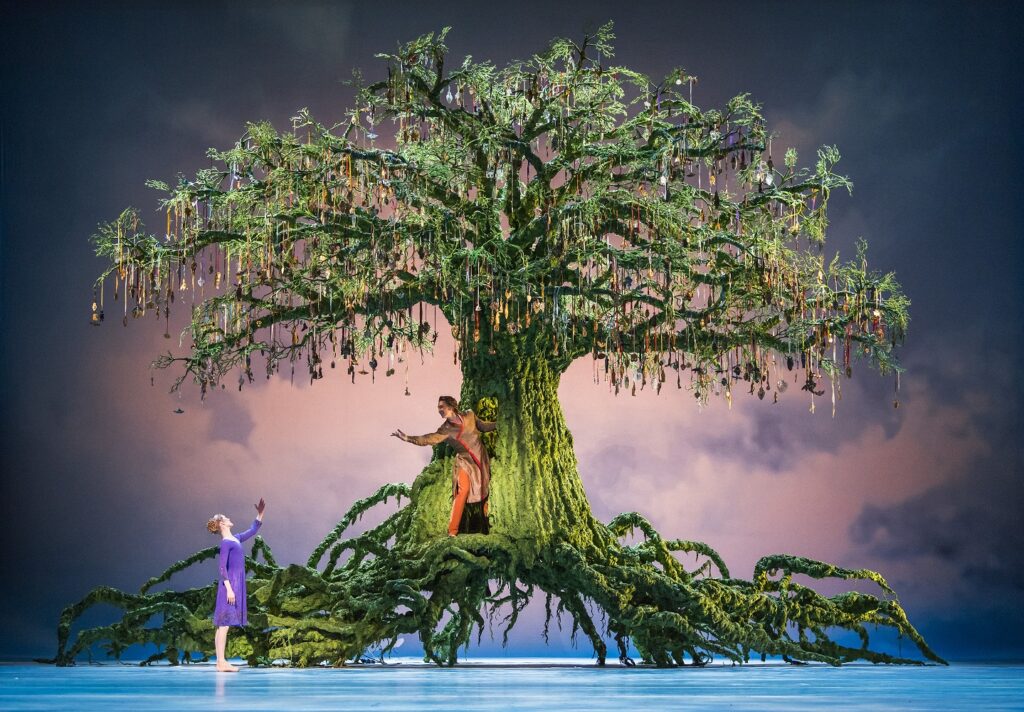
Sarah Lamb and Vadim Muntagirov in Royal Ballet’s “The Winter’s Tale” choreography by Christopher Wheeldon – Photo ©Tristram Kenton, courtesy of SCFTA.
CW: Yeah, I mean, I think Bob… Bob Crowley (Set Designer) and I were talking about the designs for the work we wanted, I wanted something that felt both Shakespearean and contemporary, that felt both, uh, ballet and theater. And so Bob started to work his magic and kind of invented this non-specific style that says both now and then, It’s both sculptural and painterly. It’s both fairytale and reality. You know, all of these, there’s so much duality, like you said before, there’s so much duality. But also, again, the challenge being so… you’ve got the dark world of Leontes and his and the court of Sicilia, and then you’ve got this, you know, pastoral world of …Bohemia. How do you find one strong image that says that we are in a pasture that isn’t just a backdrop, painted field or, you know… a village. So something that is sculptural, that also signifies, a majesty, a connection to the earth… that represents generations and so that’s really kind of how the tree was born… sort of exploring.
I remember I was working in Seattle at the time and I saw a wonderful wishing tree, um, at the top of the hill, above the ballet, one day. And I saw, so unique, in public, some people tying all these wishes onto the tree. And that gave me the idea of, okay, I’m gonna go back to Bob. We already decided it should be a tree, but I thought we should think it should be a tree that’s been festooned with ornaments, that are, that mean something to, you know, this community. So that’s sort of how that image came about.
JD: Oh, that’s lovely. Is it true that tree has 1400 wishes on it?
Oh yeah, they’re not, they’re actually not wishes. They’re all individual trinkets. Right? So, there are some, repeats obviously…1400! It looks like there are 1400 individual trinkets on there, So even though they weren’t individually carved or cast, they were hung individually. And it took about a week and a half for the props department at the Royal Opera House to hang all 1400 of those individual trinkets.
JD: That is remarkable. And, as far as the trinkets, they’re not formal written wishes but they represent…
CW: Yeah. Usually, on a wishing tree, people write their wish on a piece of paper and then they’re tied together with the charm and put on the tree. They’re all different sort of charms, they have a sort of spiritual, mystical, they sort of represent … invented mysticism.
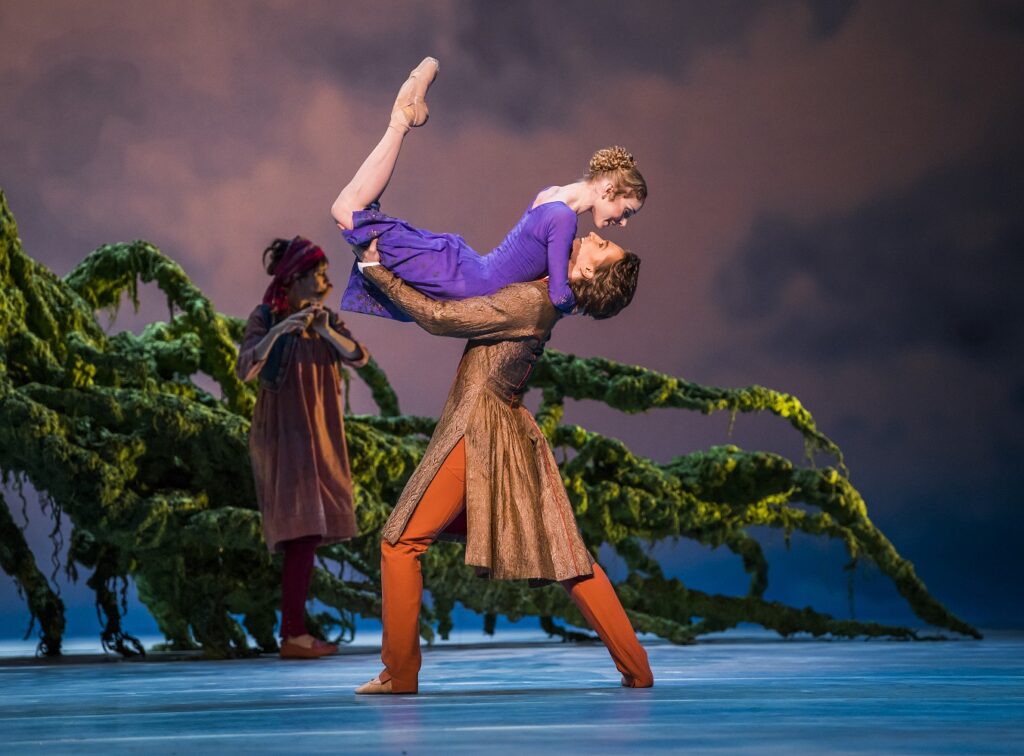
Sarah Lamb and Vadim Muntagirov in Royal Ballet’s “The Winter’s Tale” choreography by Christopher Wheeldon – Photo ©Tristram Kenton, courtesy of SCFTA.
JD: Got it… And another aspect of the set is the darkness of the stage/set. Um, it is almost like it’s taking place in midair in some ways, which is really interesting to me because it’s not festooned (to use that word) with so much Set that you can’t find the performers in it, you know? Which is what I love, especially for this piece.
CW: Well, Bob, I mean, it’s one of the brilliant things that Bob Crowley does. He always, when we work together, and we’ve work together a lot now, we always start with a blank, a model box of the space that we’re gonna be working in, um, with nothing in it. And he said, let’s find a way to put as little in here as possible. We are just gonna put in exactly what we need to tell the story so that the space is open for you to really tell the story through the dance. And, you know, Bob rarely puts big pieces within the space or has a lot of hanging drops. It’s usually a very airy, open, open environment. And it’s great because he makes me work harder. He’s like, you know, let’s not be lazy here and just purely tell the story through the design you need to do your work and, and tell it through the choreography…I appreciate that.
JD: What a great creative partnership. Working with such a trusted cohorts… Lovely.
CW: Yeah. You know… I’m gonna say it, I’ve been, I’ve been smart over the years and I try really hard to only work with brilliant people that are so much better than me, because they make me look so much better that way. Um and I, I feel like I can say that. I get annoyed when other people say it… (laughs) but I feel like I can say it.
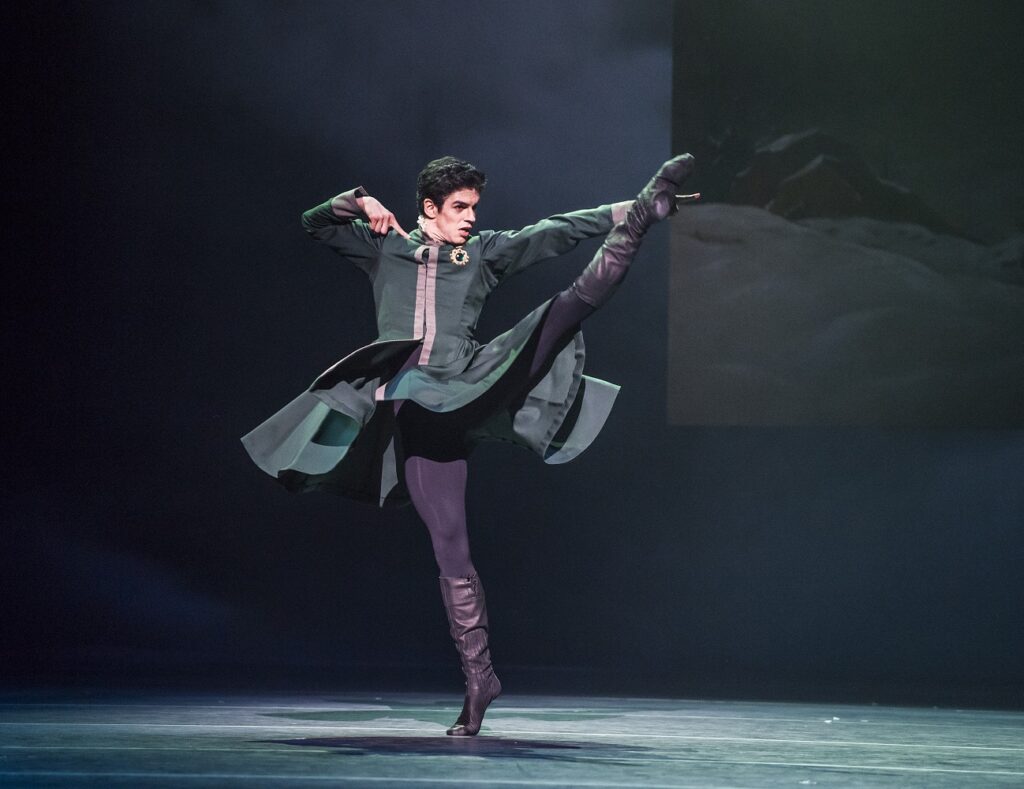
Federico Bonelli in Royal Ballet’s “The Winter’s Tale” choreography by Christopher Wheeldon – Photo ©Tristram Kenton, courtesy of SCFTA.
JD: (Smile) Well, you’ve had such a wonderfully eclectic career…Ballet; the playful Alice and the dark and challenging Winter’s Tale; Then Broadway’s American in Paris and iconic MJ …what wonderful successes. What do you attribute this to?
CW: I just think I enjoy a lot of different things and love to push myself, to be honest. and think of it more as a variety than eclecticism. I think I attribute it to… I am a very curious person. I’m often interested in what I can and can’t do, and quite happy to learn what I can and can’t do by trying… rather than worrying about whether I’m gonna fail. I’d rather just dive in and if I fail… I fail…and then you move on. Also, I’m very fortunate. I get asked to make a lot of work and I think it keeps each project feeling very fresh. I feel very inspired when I’m going off in different directions. So, it’s in part, curiosity, and in another part, practicality.
JD: Yes, and since you can’t be everywhere all the time to stage your work, how do you choose the proper people to restage your ballets and shows. It seems like it would have to be those who really understands your work.
CW: Yeah. I mean I always start with, do you actually like my work? Oh, that’s important because they actually have to really feel invested in the work that they’re doing. And you know, I’ve reached an age where many of the dancers that I’ve made these roles on are becoming rehearsal directors. They’re retiring out of being professional dancers. We all know a dancer’s career is very short. For example, you know, some of the principals at Ballet Theatre are being trained by Edward Watson, who was the original Leontes at the Royal Ballet. He’s here staging his role, his and a few other roles for the company. Jillian Vanstone, who was the first Perdita, the daughter of Leontes and Hermione at the National Ballet of Canada, is now also a stager of choreography for me and worked on Alice with the Royal Ballet in London. She was the first Alice, as well in Canada and has been working on Winter’s Tale. And then I’m very fortunate ’cause one of my best, best friends, who was still dancing when I stopped dancing, unfortunately had his career cut short by a knee injury. When he got injured, I said, look, let’s figure something out. Maybe you can go out and stage something for me and we’ll see how it goes. And he has been sort of by my side since then and is kind of in charge of taking care of a lot of my work, most of it, actually. So, we’re up to, I think we now have nine or 10 different stagers who are out in various places, working on the work that’s out in the world, which is great. And I so appreciate them. I trust them. It’s a really hard job because, you know, they go off and do all the legwork and then I show up and, you know, get the accolades. So it’s not an easy job. And, you have to have this very particular sort of mind for it. But I recognize that, and I cherish them. I really do.
JD: So to wrap up, do you have anything that you personally want to say about the ballet, about your life as a dancer, as a choreographer, um, that might be important for our audience here in Southern California to know about A Winter’s Tale?
CW: I think it’s very timely, but I don’t think it’s necessarily timely to right now. I think it’s always timely because of its central theme of human emotion that can drive us to do terrible things. And then there’s the capacity for redemption. The human capacity for redemption and forgiveness and at the center of all of that…hope for a brighter future. And I think we, you know, we keep passing through these periods of time where we’re faced with some pretty intense challenges in life and people are doing terrible things and we often forget the fact that people can…we can forgive. And… there is always capacity for hope. So I think in a way that that’s why, this ballet resonates so well with the audiences…and, even for the non-ballet public because, of course, there’s a lot of stories to hang on to. So if you’re not somebody who goes to the ballet often, I think Winter’s Tale is a really good way in, because there’s a lot to relate to. It’s visual, it’s beautiful. The music is relatable and I think we can all recognize ourselves in these characters.
JD: So timely and so emotional for me. I’m so happy that there are things like this in the world today. Thank you so much, Chris, for taking this time with me.
CW: Thank you, Joanne. Thank you. That’s very kind. Yes. Well, it’s so nice to chat with you…very nice. Thank you.
Christopher Wheeldon’s ballet The Winter’s Tale runs April 3 – 6, 2025 at the Segerstrom Center for the Arts. For more information and to purchase tickets, please visit their website.
To learn more about American Ballet Theatre, please visit their website.
Written by Joanne DiVito for LA Dance Chronicle.
Featured image: Scene from Royal Ballet’s The Winter’s Tale choreography by Christopher Wheelan – Photo ©Tristram Kenton, courtesy of SCFTA.

